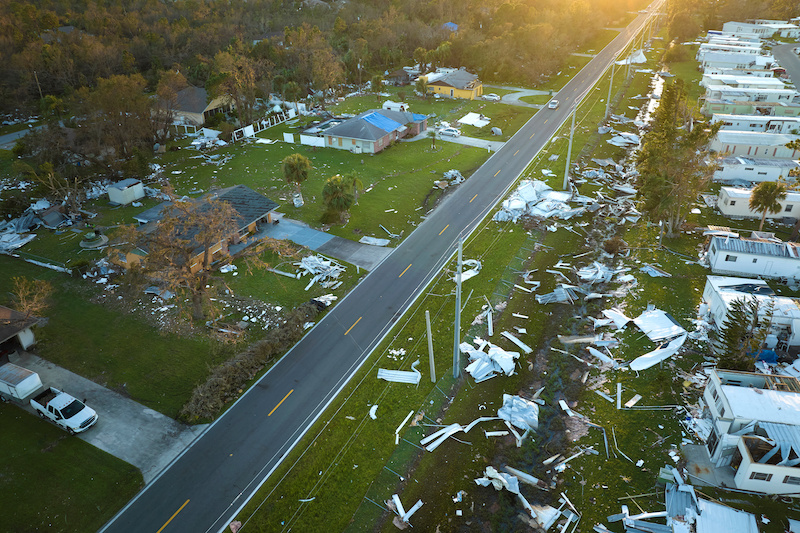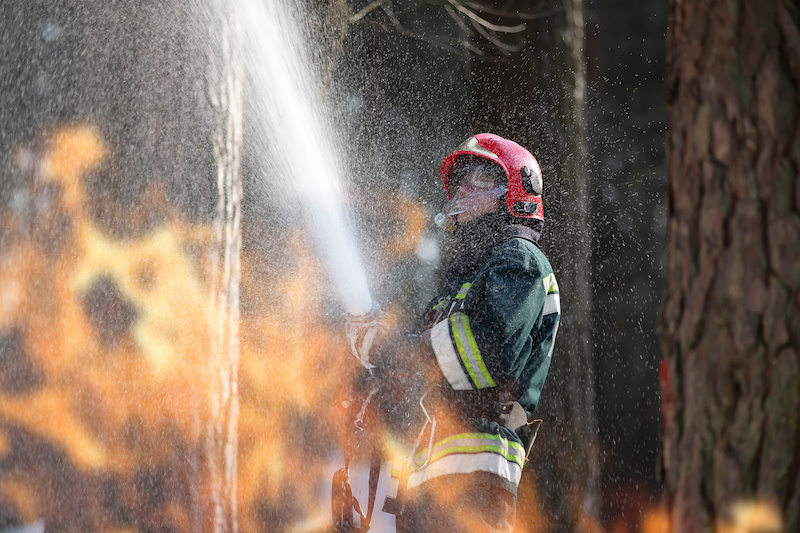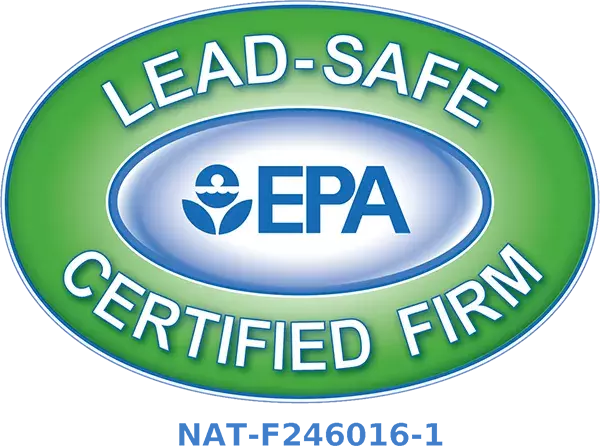Recently, I had the opportunity to chat with a volunteer firefighter in my area; his gaze was resolute as he described their most recent callout. He had this look of determination in his eyes as he told me about their most recent emergency response. “Every second counts,” he said, reflecting on the chaos that can follow disasters.
The imagery was vivid: torrential rainstorms causing flash floods, homes gutted by wildfire, or hurricanes unleashing untold damage. Realizing the importance of being prepared for disasters, I thought about how many lives and properties could be saved if everyone was equipped with the right knowledge.
This sparked an idea – why not create a comprehensive guide covering emergency response after natural disasters? Let’s dive into some life-saving strategies and tips together!
Table Of Contents:
- Emergency Response Overview
- Emergency Response After a Fire in the Home
- Emergency Response After Water Damage in a Home
- Emergency Response After a Hurricane Strikes a Home
- Emergency Response Plan if Disaster Strikes Your Property
- Preventing Future Emergencies Through Mitigation Efforts
- Understanding The Five Phases Of Emergency Management
- FAQs in Relation to Emergency Response
- Conclusion
Emergency Response Overview
When a calamity occurs, the rapid reaction can be critical. The world has witnessed some severe crises, with natural disasters and health crises disrupting lives in unimaginable ways.
Take for example Save the Children – an organization known for its exceptional emergency response since World War I. They’ve been able to help 118 million children across 116 countries, underlining how crucial rapid action is during emergencies. This showcases how important effective emergency management becomes when we are faced with extreme weather conditions or disease outbreaks.
Understanding Emergency Preparedness
The key to minimizing damage from any crisis lies in preparedness. Whether it’s motor vehicle accidents due to distracted driving or massive hurricanes, being ready goes a long way toward safeguarding properties and most importantly – lives.
In case of fire-related incidents, one must be equipped with necessary safety measures like first aid kits and firefighting tools while having an evacuation plan helps ensure everyone’s safety. For those living near water bodies prone to flooding or in areas susceptible to earthquakes, having an emergency kit at hand can be lifesaving.
Staying well-informed about potential threats is crucial for preparedness, including being aware of alerts related to explosives safety and updates from the Occupational Safety and Health Administration (OSHA) regarding system safety. It is also important to stay updated on executive orders that focus on public protection during emergencies. Additionally, it is worth noting the defense strategies recommended by the Department of Defense (DoD) for safeguarding buildings against airborne chemical attacks, as these measures could be critical in times of unrest or military conflicts.
This level of preparation extends beyond individuals though – communities need comprehensive plans too. From proper material handling during construction projects to machine guarding, there’s a lot that goes into ensuring safety on a larger scale.
And while we’re at it, let’s not forget about the importance of training. Regular drills and programs like army mishap investigation courses can be crucial in helping people respond correctly when disaster strikes. It’s all about staying one step ahead.
At its core, being ready isn’t just about having an emergency kit close by. It’s about detailed planning and consistent training too.
Being quick off the mark can make a real difference in emergencies, something Save the Children’s global work proves. Getting prepared – whether that’s stocking up on first aid kits, mapping out evacuation routes or keeping an eye on safety updates – helps protect both people and places. But it’s not just about getting yourself ready; whole communities need to have solid game plans too. Plus, remember that preparation isn’t just about gear: detailed planning and regular training are key.
Emergency Response After a Fire in the Home
A fire outbreak can leave you feeling lost and overwhelmed. But, acting quickly is crucial to start recovery efforts and minimize further damage. Here are some steps to help guide your actions after a home fire.
Assessing Damage and Ensuring Safety Post-Fire
Hold back on entering your house right away. The structure could be unstable or there may still be hot spots that could flare up again. Get professional help from emergency response teams who have experience with fire damage, assessing water damage, and managing relief efforts.
In situations where natural disasters strike without warning, it’s imperative for individuals and communities alike to understand basic emergency planning, develop effective evacuation plans, use appropriate investigation tools for hazard identification (like machine guarding material handling), and follow OSHA safety guidelines diligently.
This kind of preparation can greatly reduce personal risks during emergencies such as fires or extreme weather events while ensuring health services remain accessible even in crisis situations when they’re needed most.
Emergency Response After Water Damage in a Home
Water damage is an unwelcome guest that can strike your home at any time. From plumbing mishaps to extreme weather, the causes are many and varied. But don’t fret. Our experienced team at J&R Restoration is ready to help you navigate this challenging situation.
We’ve handled countless cases of water damage and understand how crucial immediate action is. The first 24-48 hours after discovering water damage are critical for preventing further issues such as mold growth or structural instability.

Mitigating Water Damage: Immediate Steps
The initial step when facing water damage involves shutting off the source if it’s safe and possible. Next, ensure everyone’s safety by avoiding areas with electrical appliances or outlets until they’re checked by professionals.
If severe weather caused the flooding, make sure to stay updated on local alerts through media messages while waiting for professional assistance from us at J&R Restoration.
Our Role in Your Emergency Response Plan
J&R Restoration offers swift response services round-the-clock because we know disasters don’t follow office hours. We use advanced investigation tools like moisture meters and infrared cameras which let us quickly assess affected areas without invasive procedures.
Beyond Drying: Comprehensive Recovery Process
We go beyond just drying out your property; we offer complete restoration solutions including fixing damaged drywall, flooring, ceiling tiles, etc., essentially providing emergency remodeling services under one roof.
Your Health Is Our Priority
In situations where contaminated water has invaded your space – think sewage backups or floodwater – health risks become a serious concern. Our team is highly skilled and experienced in dealing with such scenarios, guaranteeing a comprehensive clean-up and sanitization.
We also understand that such situations can cause stress and anxiety, so we’re committed to communicating clearly throughout the process and answering all your questions with patience.
When water damage hits your home, quick action is crucial. Start by safely shutting off the source and staying clear of electrical hazards. J&R Restoration offers round-the-clock help to assess the situation with advanced tools and provide comprehensive recovery services – from drying out to emergency remodeling. Your health is paramount in our approach, especially when dealing with contaminated water.
Emergency Response After a Hurricane Strikes a Home
Hurricanes are an all too familiar natural disaster in South Florida. The sheer force of extreme weather can leave your home severely damaged, turning lives upside down. But don’t lose hope. Our team at J&R Restoration has years of firsthand experience dealing with hurricane aftermath and is here to help you get back on track.

Immediate Steps for Safety
The immediate moments after the storm can be overwhelming but ensuring safety should be your top priority. Avoid entering your property until local authorities give the green light because there might still be hazards present like live wires or structural instability.
For a quick and professional assessment of the damage, contact us now. We’ll use our expertise in emergency response along with high-tech investigation tools to assess the damage professionally and accurately.
Cleaning Up After Water Damage
Water damage from flooding or leaks is one of the most common issues homeowners face post-hurricane. Immediate action is crucial here – allowing water to sit will only worsen the problem by promoting mold growth which poses serious health risks.
We know this well since we’ve helped countless Floridians deal with similar situations over many hurricane seasons past.
Mold Remediation Post-Hurricane
If not dealt with promptly, water intrusion leads to another unwelcome guest – Mold. Don’t worry though; we have got you covered here as well. Our professional mold remediation services include identifying areas affected by mold using advanced techniques and treating them effectively without causing further harm to your home environment.
Patching up Your Roof: Tarping Services
- A compromised roof means exposure directly to nature’s elements, so securing it should never wait for insurance adjusters to show up. That’s why we offer immediate roof tarping services.
- We’ll help protect your home from additional water damage until a more permanent solution can be implemented.
Getting Back on Your Feet
Getting back on your feet after a big event can feel like climbing a mountain. But remember, you’re not tackling this alone. We’re here with our interior remodeling and reconstruction services.
Don’t let a hurricane crush your spirit. With the help of J&R Restoration, you can prioritize safety by waiting for the authorities’ green light before re-entering your home. Our seasoned team will professionally evaluate damages, promptly clean up water damage to stop mold in its tracks, offer efficient mold remediation if required, quickly secure vulnerable roofs with tarp services and be there every step of the way.
Emergency Response Plan if Disaster Strikes Your Property
When disaster strikes, it’s not the time to start making plans. Preparation is key, and that’s why you need an emergency response plan in place for your property. Let’s discuss some crucial elements of this plan.
The Role of Early Warning Systems
An efficient warning system can be a savior during catastrophes or meteorological occurrences. Tools like NOAA Weather Radio, apps on mobile phones, and local alert systems provide critical information about impending hazards.
In addition to having a warning system, it is important to have evacuation plans in place for when leaving the home quickly becomes necessary. Make sure everyone knows where safe places are both inside and outside the house, depending on the type of emergency.
Mitigating Damage Through Emergency Preparedness
Part of any good emergency response involves having supplies ready for different types of emergencies: fires require fire extinguishers; floods necessitate sandbags or other water barriers; storms might call for board-ups or roof tarping services.
To protect against health crises, consider keeping basic medical supplies handy at home alongside professional help numbers like J&R Restoration.
The Importance Of Post-Emergency Actions
Your actions post-disaster are just as important as pre-emergency planning. You may have insurance questions that require prompt attention—know whom to ask ahead of time so there won’t be delays when filing claims becomes necessary due to damages caused by unexpected events such as fires or hurricanes.
Keeping An Eye On Weather Patterns And Staying Informed
Staying informed about weather patterns can be a life-saving practice in regions prone to extreme weather conditions. Regularly monitor the National Weather Service’s website or your local news outlet for warnings regarding potential extreme weather events.
Preparation is key in managing home disasters. Set up early warning systems and evacuation plans, and keep supplies ready for different emergencies like fires or floods. Post-disaster actions are equally important—know who to contact for insurance questions. Stay informed about weather patterns to anticipate potential threats.
Preventing Future Emergencies Through Mitigation Efforts
The aftermath of a disaster is devastating, but it’s the calm before the storm where we have the power to make a difference. This can be achieved through mitigation efforts that aim to reduce or eliminate long-term risks caused by disasters and hazards.
We at J&R Restoration understand this because we’ve been there. We’ve seen first-hand how proper planning can drastically lessen damage from natural disasters like hurricanes, fires, and extreme weather events. Our team has worked tirelessly on countless projects across South Florida, helping communities rebuild after these catastrophes.
Mitigation involves several crucial steps designed to minimize potential harm during an emergency event such as an earthquake or wildfire. These measures include everything from implementing building codes with higher standards for construction materials and methods – which are proven strategies in preventing severe property damage – to developing evacuation plans ahead of time so people know exactly what they need to do when disaster strikes.
Disasters might be unavoidable, but we can cut down their effects significantly with good planning and steps like strict building codes and comprehensive escape strategies.
Understanding The Five Phases Of Emergency Management
By recognizing the five phases of emergency management, we can better comprehend how to respond and recover from disasters. Let’s unpack these stages to understand their importance in dealing with emergencies like natural disasters or health crises.
The Prevention Phase
This phase involves activities that help prevent an emergency from occurring in the first place. Consider it akin to a seatbelt when driving – donning it not because you anticipate an accident, but as something that could save your life in the event of unforeseen circumstances.
Mitigation Phase
In this stage, we try to lessen the severity of an emergency’s impact. Similar to machine guarding material handling at a workplace – which aims to reduce potential injuries or damages – mitigation measures are implemented even before disaster strikes.
Preparedness Stage
Akin to having a well-stocked first aid kit handy at home; being ready for emergencies can make all the difference when they occur. This includes creating evacuation plans and undertaking disaster preparedness drills so that everyone knows what actions need to be taken during actual events.
Response Period
This is where things kick into high gear after an incident occurs. In much the same way that health services spring into action during disease outbreaks by providing emergency medical supplies and care, swift response efforts aim towards reducing further harm while addressing immediate needs such as shelter or food.
Recovery Era
The last step focuses on restoring normalcy post-disaster through rebuilding infrastructure and rehabilitation programs. It also involves evaluating the entire process to improve future emergency management plans.
Each phase of emergency management is an essential component for successful disaster response and recovery. And while we cannot control natural disasters or extreme weather events, we can make sure our response to them is well planned and executed – minimizing damage and loss. So remember: it’s not just about surviving emergencies but thriving despite them.
Picture emergency management as a five-step dance: prevention, mitigation, readiness, response, and recovery. It’s like buckling your seatbelt to avoid accidents; using safety guards on machines to lessen injuries; keeping first aid kits handy for preparedness; quick medical service during health crises; and rebuilding stronger after disasters. The endgame? It’s not just about making it through emergencies but flourishing in spite of them.
FAQs in Relation to Emergency Response
What is an emergency response?
Emergency response is a coordinated effort to address and manage an unexpected crisis, aiming to minimize its damage.
What are the 5 basic emergency responses?
The five basics are prevention, protection, mitigation, response, and recovery. These steps guide the effective handling of emergencies.
What are the 4 basic responses to emergencies?
The four core responses include staying calm; calling for help; assessing victims’ conditions; and providing first aid if capable.
What are the 6 steps to emergency response?
Six key steps: assess hazards; plan safety measures; implement those plans; train everyone involved in them; maintain your readiness levels continuously then review & improve periodically.
Conclusion
Mastering emergency response starts with understanding its importance. It’s a critical skill set, especially when disaster strikes your property.
Whether it’s a fire or water damage, every second counts in minimizing the impact. Knowing how to assess and fix the situation is crucial.
Remember this – disasters are unpredictable but our preparedness shouldn’t be. Develop an effective evacuation plan, equip yourself with first aid knowledge, and stay updated on extreme weather conditions.
The goal? To keep ourselves safe while also protecting our homes from future emergencies through mitigation efforts.



